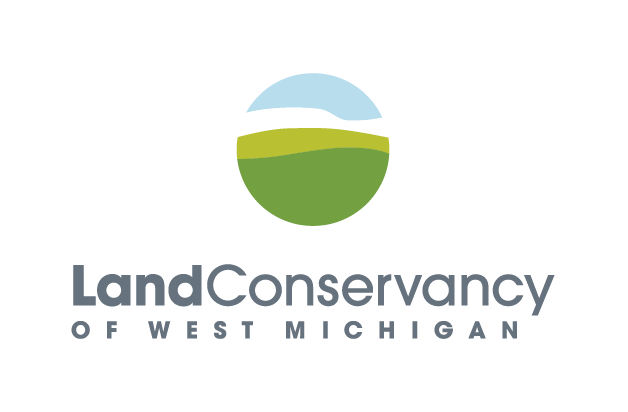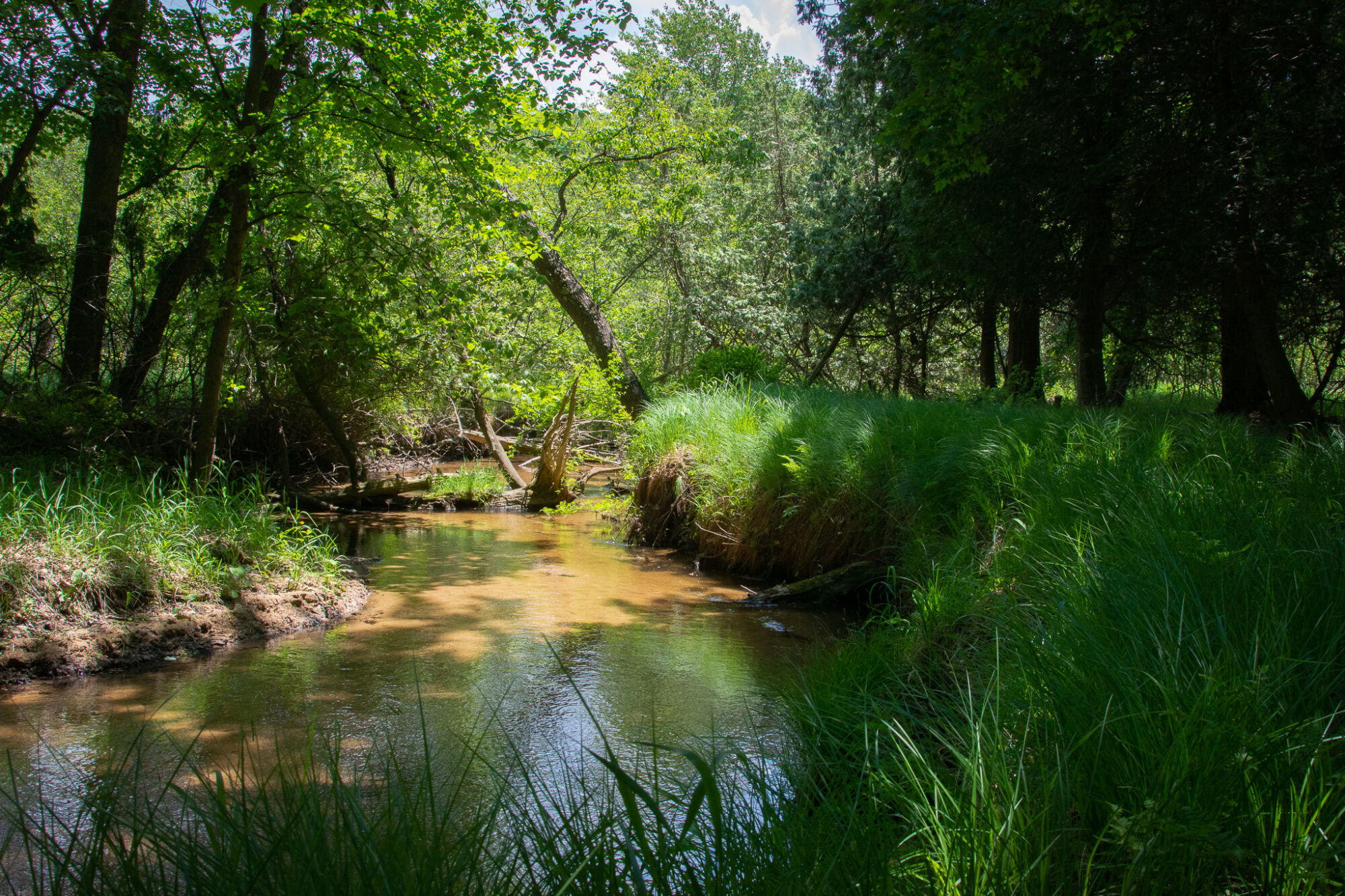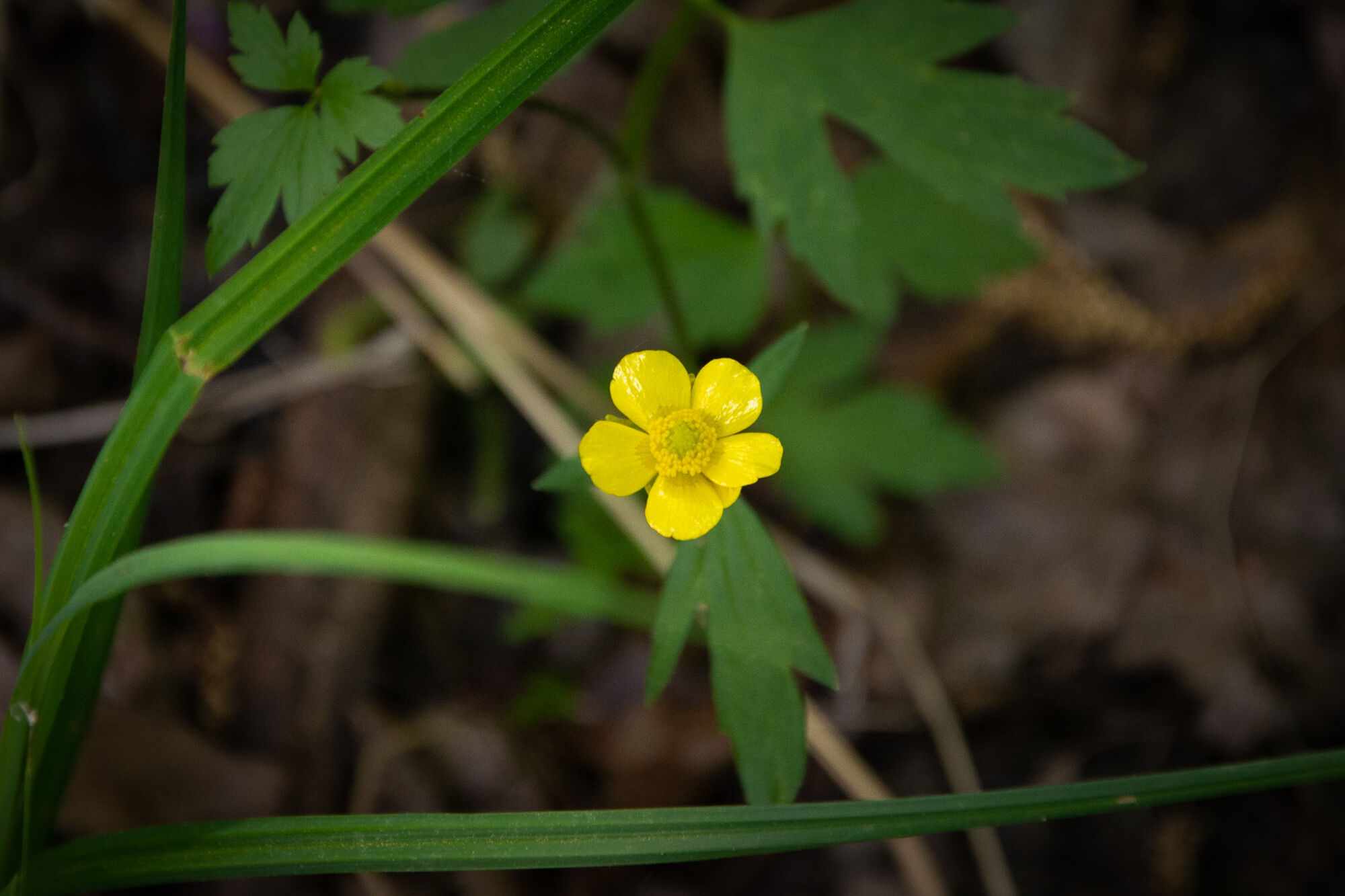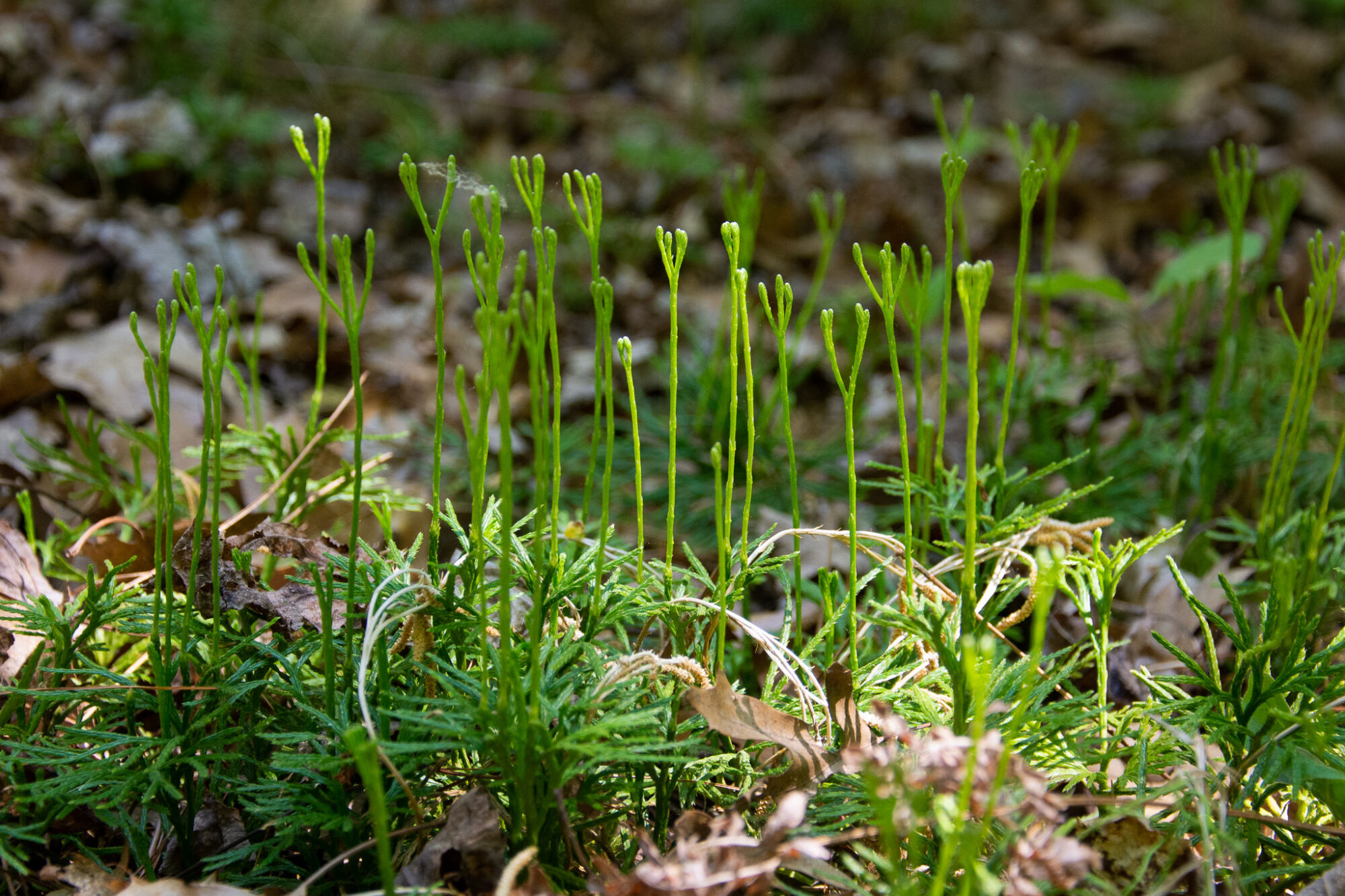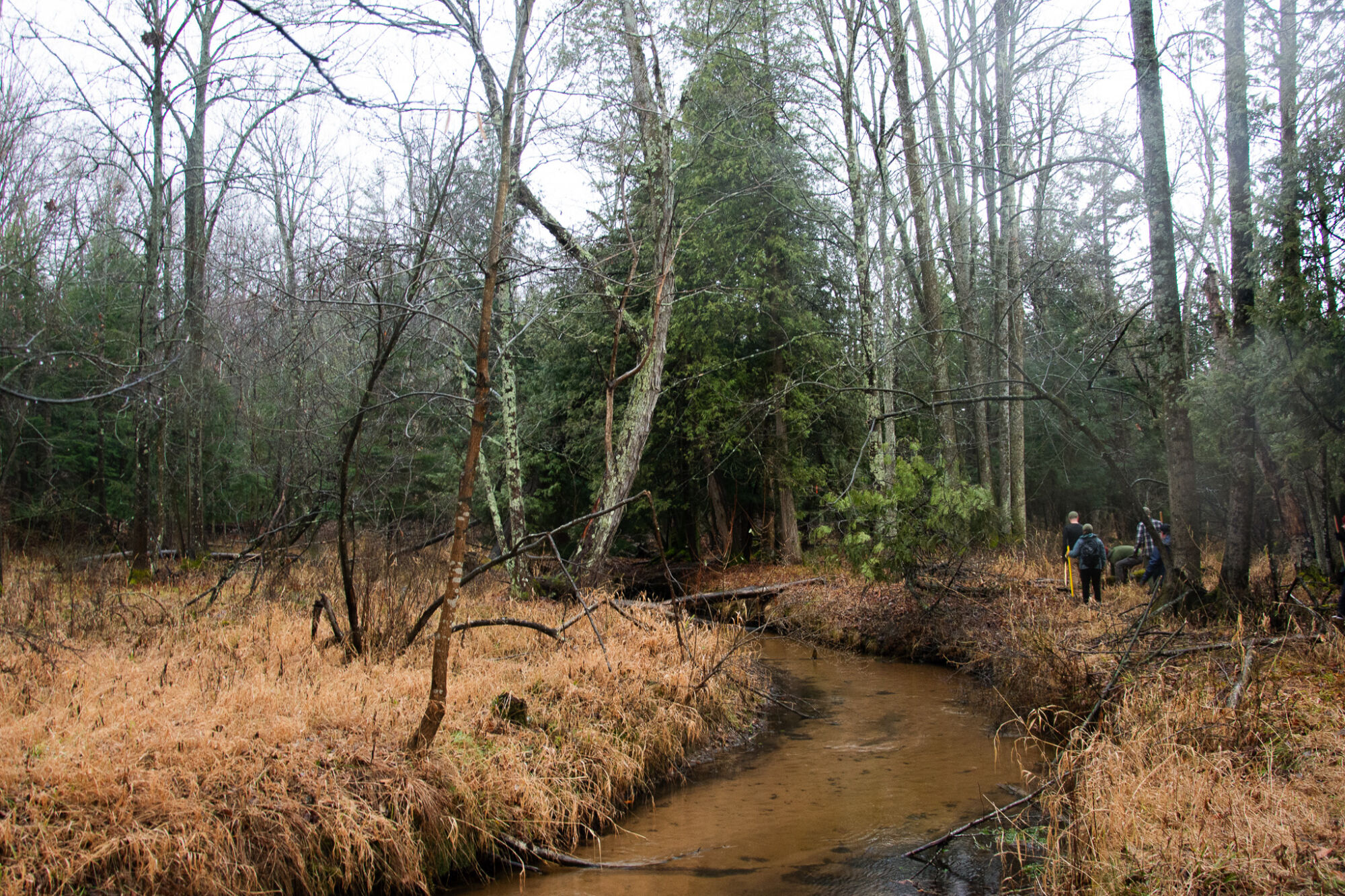Conservation Value
Dumaw Woodland Nature Preserve is mostly forested. The preserve also features wetlands and the floodplain of Dumaw Creek, which flows into the North Branch of the Pentwater River and ultimately Pentwater Lake and Lake Michigan in the town of Pentwater. The preserve protects about 1,500 feet of frontage on Dumaw Creek and 700 feet of frontage on the Pentwater River.
The preserve is located within the boundary of the Manistee National Forest, upstream of Pentwater State Game area, and in the Pere Marquette-White River Watershed. Dumaw Woodland Nature Preserve’s connections to other protected lands and waterways mean that the benefits of its permanent preservation are amplified and extend beyond the property’s borders.
The preserve supports a variety of birds and wildlife, including bears, bobcats, owls, turkeys, and foxes. Salmon and steelhead spawn in Dumaw Creek. The forest consists of hemlock, oak, maple, white and red pine, and more. Ephemeral wildflowers paint the forest floor in spring, and ferns blanket it in summer. An immense variety of plants can be found in the preserve’s wetlands.
The Land Conservancy’s goals for managing the property include working with volunteers to remove invasive species and encouraging the development of mature, biodiverse ecosystems.
History
The preserve sits on a sandy lake plain that was formed after the last period of glaciation when Lake Michigan water levels were much higher. Blowing dune sand, plus the erosive action of Dumaw Creek, formed the topography now seen on the preserve.
Prior to European colonization, Native American cultures lived in the area for over 10,000 years. Through activities like village clearings, fuelwood cutting, agricultural clearing, hunting, food harvesting, and fire, Native Americans shaped the ecology of the landscapes they inhabited. A Native American village stood close to the preserve and was inhabited until the early 1600s.
According to General Land Office surveys completed around 1800, the landscape once consisted of a mix of beech-sugar-maple-hemlock forest and cedar swamp. These habitats dwindled and suffered as settlers clearcut the forests for timber and planted conifer plantations.
Paul Tomandl purchased the property in the 1970s while working for the U.S. Army Corps of Engineers in Oceana County, after he saw a flyer advertising 40 acres for sale in the local Pink Elephant Diner. Paul and his wife Edith (Dee) and their family and friends used the land to camp, hunt, fish, and explore. He planted thousands of trees and created trails running through the property. When an adjacent parcel went up for sale in the 1990s, he purchased it, extending the property’s reach south to the Pentwater River.
Paul always intended to protect the property from development. While preparing his estate plans, he and Dee decided to donate the property to the Land Conservancy of West Michigan so that others could enjoy the restorative benefits of time spent by the calmly flowing waters of Dumaw Creek and in the shade of the surrounding forest. The Land Conservancy of West Michigan acquired the property in 2023.
